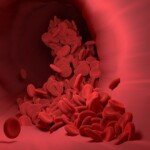Brew like a barista: The revolution of 3D printed WDT tools for perfect espresso
Weiss Distribution Technology (WDT) has become a non-negotiable ritual for coffee lovers seeking coffee shop coffee at home. By breaking up clumps and evenly distributing coffee grounds in the Portafilter, this simple process hits the channels and unlocks unparalleled flavor. tool? Traditionally, a set of thin needles. However, using readily available items like paper rolls or sewing pins is awkward. Enter 3D printing – especially Metal 3D printing – Create precisely engineered WDT tools for improved consistency, ergonomics and durability.
What is WDT tool?
The WDT tool uses this as its core, using a thin needle (ideally 0.35-0.4mm in diameter) to stir the coffee base before stirring. Hand stirring eliminates the micro-mint that causes uneven water flow during extraction, resulting in sour or bitter espresso. While DIY solutions are plentiful, they lack the precision, stability, or hygiene needed for daily perfection.
Why 3D Printing Converts WDT Tools
Traditional machining struggles with the complex geometries and tiny features of high-performance WDT tools. Metal 3D printingHowever, unparalleled advantages are provided:
- Accurate to the micron: Use laser-based additive manufacturing (such as SLM/DML) to achieve needle diameters as small as 0.3mm. This ensures a consistent, burr-free needle that glides through the coffee bed without compacting the ground.
- Optimized ergonomics: Designed handles with finger grooves, non-slip texture or custom angles to reduce wrist strain during blending. TPU or polymer handles can be integrated with metal bases via multi-substance printing.
- Freedom of customization: Modify needle gauge (4-9 stitches), pattern (round, oval) or depth coverage based on basket size. Adjust handle length or weight for personal comfort.
- Material advantages: Stainless steel (316L) ensures the needles won’t rust, bend or retain odors. Titanium provides ultra-lightweight strength to the ergonomic handle.
Great Advantages: From CAD to Coffee Station
exist greatwe specialize in converting complex designs into functional high-tolerance metal components. Our flagship workflow for custom WDT tools embodies Cutting-edge metal 3D printing and strategic Post-processing:
1. design engineering:
Our team uses generative design to optimize needle placement and pressure distribution. Finite element analysis (FEA) verified the structural integrity during the churning action. Designed to maximize fluid dynamics in the coffee bed while maintaining tool life.
2. Advanced Metal Printing:
use Direct Metal Laser Sintering (DML) Machine, we build the tool layer by layer from aerospace grade alloy (17-4 pH stainless steel, ti6al4v). A fine spot (accuracy ±20µm) ensures that the tip remains sharp and undelayed.
3. Precision post-processing:
Original print calibrated:
- relieve stress: Heat treatment eliminates residual stress.
- CNC micro machining: Ultra-Fine milling reaches needle roughness below RA 0.8µm.
- electricity: Eliminates microscopic defects, prevents coffee retention and enhances corrosion resistance.
- deep cleaning: Medical grade ultrasonic bath eliminates contaminants.
4. quality assurance:
Microscopic inspection, dimensional verification and material composition testing guarantee each needle meets specialty coffee standards.
Beyond Coffee: Food/Drug Applications
The technology used for WDT tools – ultra-fine metal components, biocompatible finishes, clean room handling – extends to sectors that require microscopic precision. Our dental tools, microfluidic nozzles, and surgical guides embody the same rigorous approach.
Why choose Greatlight for your custom WDT project?
- One stop solution: Design assistance, material selection (eight metal alloys offered), printing and FDA-compliant decoration.
- Quick turnaround: 5–7 days for prototype using hybrid manufacturing workflow.
- cost efficiency: Direct 3D printing reduces waste with CNC, reducing the cost of custom parts by up to 40%.
- obey: ISO 9001 certified with substance traceability and ROHS compliant documentation.
in conclusion
Specialty coffee craftsmanship and Professional metal 3D printing A new standard has been born: WDT tools, engineered for reliability, hygiene and exceptional extractability. Forget flimsy DIY hacks. By leveraging technologies such as DML and multi-axis post-processing, great Providing precision coffee tools designed to last a lifetime of brews. Whether you’re a competitive barista or an obsessive home espresso drinker, a custom metal WDT tool isn’t a luxury – it’s your secret weapon for unhindered flavor. Ready to change up your morning ritual? Jixiang ensures every stir is perfect.
FAQ
Q1: How thin are the needles on metal 3D printing WDT tools?
A: Using DMLS technology, we reliably produce needles Diameter 0.3mmcalibrate the laser to obtain a rigid and burr-free tip. Use a thin needle that risks bending during use.
Q2: Is stainless steel safe to come into contact with coffee grounds?
Answer: Absolutely. we use Medical grade 316L or 17-4 pH stainless steelfor non-porosity electrical power. These alloys resist corrosion, oxidation and flavor contamination. Material certification available.
Q3: Can I modify an existing WDT design or start from scratch?
Answer: Both! Submit your CAD file (STEP/STL) and we will perfect it for manufacturability. Or share your requirements (pin count, handle grip, basket size) and our engineers will design a custom solution.
Q4: What about your weight? Are all-metal tools uncomfortable?
Answer: We provide hybrid design – Metal needle with polymer grip (certified food-safe TPU) – allows for a balance between precision and ergonomic comfort. Titanium handles are also available.
Q5: How long does it take to produce?
Answer: Prototype: 5–7 working days. Batch production volume: 1–3 weeks, depending on quantity. Expedited service is available.
Question 6: Do you offer non-metallic (plastic) WDT tools?
A: While metal meets needle durability, we print polymer handle components via SLS/MJF for lightweight or budget-conscious projects. Material options include PA12 (nylon) and PEEK.
Question 7: Is surface treatment required?
one: Electricity is highly recommended Used for metal tools. It removes the microscopic print layer lines that trap coffee oils, ensuring easier cleaning and bacteria resistance.
Question 8: How to maintain metal WDT tools?
A: Rinse with water and dry thoroughly after use. Monthly deep cleaning with a food-safe cleaner such as CAFIZA is recommended. Avoid abrasive pads to preserve surface finish.
Customize your precision coffee experience
exist greatwe blend the art of additive manufacturing with applied science. From personalized WDT tools to mission-critical aerospace components, our DMLS expertise ensures unparalleled quality. Submit your design for an instant quote and taste the difference in precision.


















